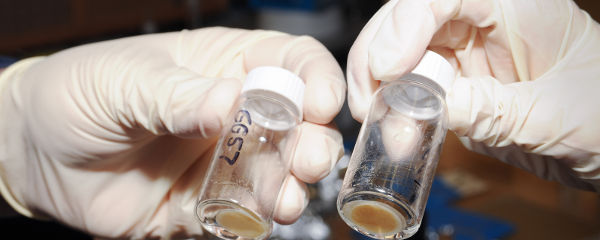What I’ve Learned:
“Acoustic levitation: be uplifted by the sound.”
Imagine you found an insect in your bathtub — a beetle, say. And also imagine that you’re a kind and compassionate soul — or maybe you actually are, in which case bully for you, Gandhi — and you want to move the beetle outdoors without harming it. That’s where the situation gets a bit complicated, because:
You don’t want to grab the bug, because you might accidentally bend a leg or antenna or something.
Also, you don’t want to catch the bug in a box or glass, because that’s cruel — and we’ve already established you’re a tree-frenching envirohippie paragon. At least for the duration of this thought experiment.
And really, you don’t want to touch the bug at all, because it’s gross. I don’t care how you feel about Mother Nature’s skittering nightmares. Nobody’s touching them on purpose. Ew.
So what do you do? It seems like yelling at the beetle to get the hell out of your bathtime sanctuary wouldn’t help — but actually, it might. If you could yell in a very specific and consistent way, and get the insect in just the right spot, and also maybe have a machine do the yelling for you, to make it less stressful for everyone.
(After all, what did that disgusting little bug ever do to you, other than rubbing its filthy thorax all over your tub?)
If you could produce just the right sort of sound waves, at a high enough volume and a suitable frequency, you could actually lift that beetle off its porcelain perch into mid-air, without ever physically touching it. The process is called acoustic levitation, and can be a lifesaver for manipulating things you don’t want to touch. Even with a Kleenex.
Acoustic levitation — or sonic levitation, as it’s sometimes called — relies on the force of sound waves colliding with an object. Under normal circumstances, this force is tiny. It might nudge a few atoms around, but it’s too weak to get anything fancy accomplished.
However. If you concentrate enough sound waves together, then channel your inner Nigel Tufnel and turn the volume all the way up to 11, those puny nudges multiply into a force that can defy gravity — at least when applied small objects, like that bathtub beetle. Or a computer chip. Or an unstable chemical.
Of course, it helps to use “ultrasonic” signals — those outside the range of human hearing — lest you blast out your own eardrums trying to float a butterfly off your medicine cabinet. Typical volumes for effective acoustic levitation signals are 150 decibels and higher.
That’s basically the equivalent of listening to a NASA rocket launch from the comfort of a chair that’s been strapped to the bottom of the solid fuel booster. Or sharing an elevator with Donald Trump. But because human ears can’t “pick up” ultrasonic frequencies, we’re not deafened by the prodigious ruckus being created by acoustic levitation experiments. We’re also too big to be lifted off the floor by those experiments — and that’s where the beetles and other small objects come in.
There are many advantages to holding something in the air using only sound. Those computer chips, for example, could be examined — or even manufactured — with a complete panoramic view, and no worries about using electromagnetic forces for levitation, either. Chemicals can be mixed or tested without fear of breaking their container, because there is no container. And yes, maybe you could get an insect out of your bathroom without needing a desperate shower yourself.
Mostly, scientists are working on the computer chips and chemicals sort of applications for acoustic levitation. But maybe a beetle crawling up some egghead’s shower head will get them moving on the last one, too. We can only hope.
In the meantime, researchers have managed to move objects around with sound, too. With the right mix of frequencies, sources and intensity, levitated objects can be made to dance, move and travel around the acoustic field. This opens up huge possibilities for what acoustic levitation can do in fields from manufacturing to medicine. Maybe someday, we’ll all have kits that will float those bathroom beetles right out the window to freedom, No muss, no fuss.
In the meantime, I suggest yelling at the bugs as loud as you can. That might not get rid of them, but at least other people will probably come running. They’ll probably know what to do. Or at least bring a Kleenex.





